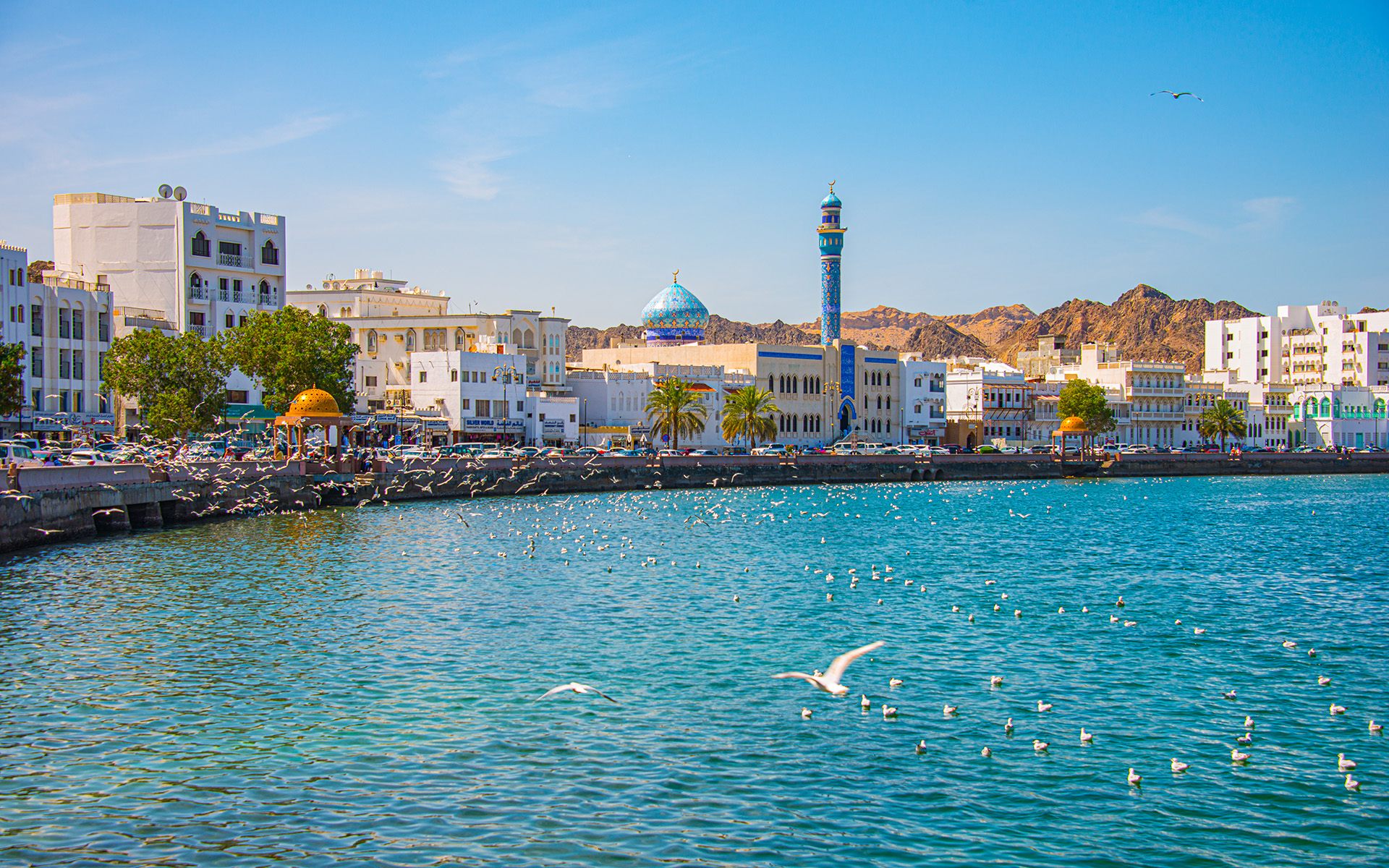Muscat’s location and topography makes it vulnerable to floods, extreme heat, and water stress, so resiliency investments will be critical.
City Class Score
| Commercial Hubs | |
| Export Champions | |
| Mobility Connectors | |
| Climate Resilient |
Corporate HQs, MNC presence, branded outlets, hotels, manufacturing, start-up ecosystem,
transport linkages, population, and income.
Go to the class information
Manufacturing, industrial parks, export share and share change by category, air and port
infrastructure, freight time to market, trade agreements, and expert interviews.
Go to the class information
Passenger traffic, flight connectivity, air-cargo flights, port infrastructure, container
ship sailings, and major road networks.
Go to the class information
Coastal and river flooding, extreme rain, extreme heat and humidity, cyclones, and water
scarcity.
Go to the class information
The majestic Hajar Mountains provide the perfect backdrop to Muscat. This range
rises dramatically from the desert, etched with deep canyons and hidden wadis, offering breathtaking
vistas of terraced villages and ancient forts. Nestled at its base, Muscat boasts winding streets
and traditional whitewashed buildings that overlook the shimmering Gulf of Oman. In the heart of the
city, the centuries-old Mutrah Souq captures the essence of a coastal port that has thrived for
centuries. This busy market is a treasure trove of silver khanjars and fragrant spices. However, the
souq faced a challenge in 2021 when heavy rains cascading over the mountains filled dry wadis and
flooded the market.
Muscat’s spectacular landscape also exposes the city to a rapidly
changing climate, much like other coastal cities along the Arabian Sea. Historically, Muscat has
weathered major storms, but the stakes are rising.
Increasing temperatures, declining
rainfall, sea level rise, and more frequent hazardous storm events are just a few of the growing
risks the city will face in the coming years. At the same time, Muscat stands to benefit from
regional growth rebalancing, another of our megatrends, especially via increased intra-regional
mobility. Ensuring that the city is climate resilient will be critical to locking in those economic
gains.
The coastal flood risks in Muscat are notably high, paralleling those of other
cities along the same stretch of coast from Yemen to Iraq. Less common, however, is the city’s
vulnerability to river floods, a consequence of its towering mountain ranges. Despite these flood
episodes, Muscat grapples with water stress, ranking in the “extremely high” category, although it
trails behind peers like Doha and Kuwait City. In response to these dual challenges, the government
is investing in infrastructure projects such as the Wadi Adai Dam, which aims to mitigate flood
risks while addressing dwindling groundwater reserves.
Heat and water stress present
additional hurdles. The city’s average temperature is typically above 35 degrees Celsius for up to
six months of the year, and extreme conditions are not unusual, with temperatures reaching over 45
degrees Celsius in 2024, prompting hospitals to issue warnings. Even more concerning is the high
number of days that register both intense heat and humidity, a common plight for coastal cities at
similar latitudes in South and Southeast Asia. To combat the risks of heat stress, the city has
implemented midday breaks from 12:30 PM to 3:30 PM for workers during the summer months, providing a
reprieve from the oppressive heat.

